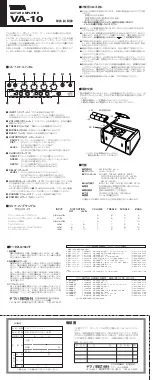
52
•
Guide to Electrophysiological Recording
MultiClamp 700A Theory and Operation, Copyright 2000, 2001 Axon Instruments, Inc.
The suction port on the HL-U series holders provided with the
MultiClamp 700A should therefore be left open.
•
Using filling solutions with low pH, or adding small concentrations of
polyvalent cations like Th
4+
, may reduce the size of the tip potential
and therefore the magnitude of any changes (Purves, 1981).
Filling Solutions
The best filling solution to use depends on the preparation under investigation and the
experience of the investigator. Although KCl gives one of the lowest tip resistances
for a given tip diameter, a KCl-filled electrode is not necessarily the fastest to settle
after a current pulse. K-citrate is sometimes faster.
It is important to be aware that during current-passing, large amounts of ions from
inside the microelectrode can be ionophoresed into the cell. For example, if current is
passed by the flow of ion species A from the microelectrode into the cell, then after 50
seconds of current at 1 nA (or 1 s of current at 50 nA) the change in concentration of A
inside a cell 100
µ
m in diameter is 1 mM. If A is an impermeant ion, the cell may
swell due to the inflow of water to balance the osmotic pressure. The injection of a
permeant ion, such as chloride, can significantly alter the equilibrium potential for that
ion.
Impaling Cells
Start with the MultiClamp 700A in IC mode (I-Clamp). Fill a microelectrode with
internal solution and secure it firmly in the pipette holder. Be sure to support the
headstage with your other hand so that the micromanipulator will not have to absorb
your force. Advance the electrode until its tip enters the bath. Press the Pipette Offset
button to null the offset.
Note:
Check the stability of the bath electrode and microelectrode. Drifts in Scaled
Output: Membrane Potential indicates that the electrode wires probably need
to be rechlorided. Also check for a changing tip potential by passing a steady
current, as described above.
















































